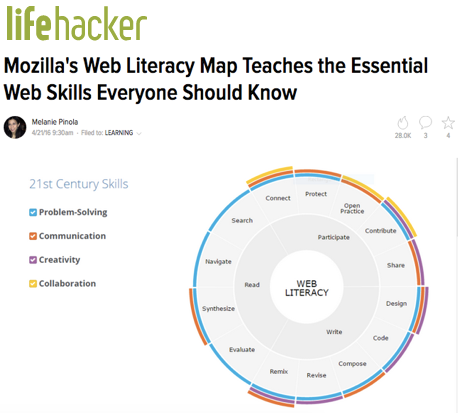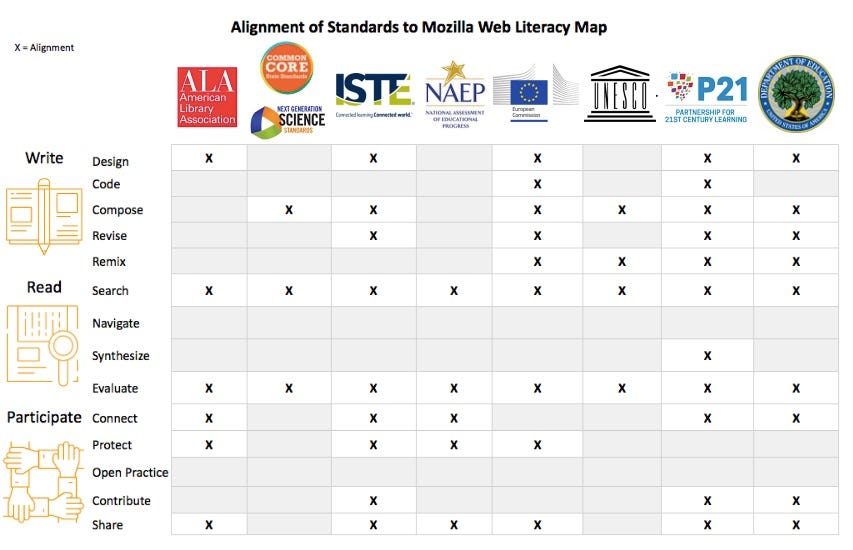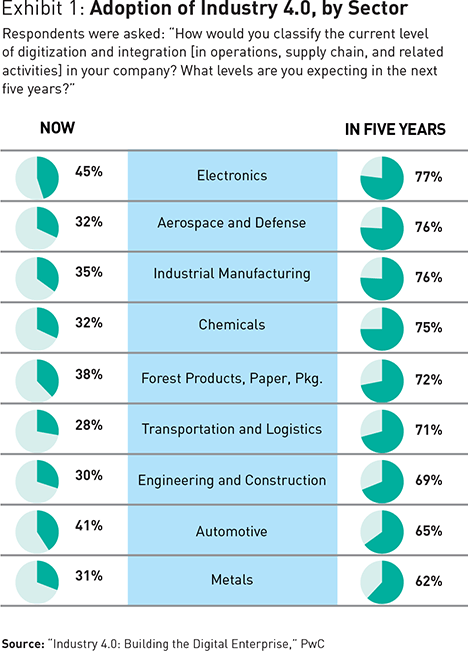Posts Tagged ‘artificial intelligence’
AI, Autonomous Cars, and Libraries
at RMG’s Annual Presidents’ Seminar:
The View from the Top on Friday February 9, 2018, 2:00 p.m. – 4:00 p.m.
ALA Midwinter Conference, Denver Colorado Convention Center Room 505
Who, When, Where?
- How will these disruptive technologies enter the
Library Industry ?
- Who will lead the innovation?
- And what about Robots, Blockchain, and the loss of Net Neutrality?
- How will Artificial Intelligence and Self-Driving Cars improve library services and performance?
- • In the age of click and digital download, will driverless library (or Uber or Lyft) delivery services plus robots-to-the-door put printed books and other physical items into readers’ hands with comparable ease? Or transport and escort readers to Library programs and browsing opportunities?
- • Alexa: Please deliver to my weekend address the Hungarian cookbook I checked out from my Branch Library last year and fresh — not frozen — ingredients for goulash for six. Text me by Thursday if I can’t get all this by Friday 6pm. Also, could you recommend a suitable under $15 red wine available at my weekend Whole Foods?
- • Siri or Alexa: Call the Library and make reservations for my two grandchildren and me for the February program on Spring solstice, and ask them to text each of us confirmations. Also, could you ask the Library to send them links to e-books that explain the history of astronomy? And deliver to Amy a book in English or Mandarin about ancient Chinese astronomy a week before the program?
The Seminar is open to everyone for dialogue on topical issues and concerns — registration is not required.
Attendees are invited to ask questions of Library Industry executives entrusted with delivering platforms and solutions for global library systems, services, and content to thousands of libraries serving millions of library users worldwide.
Participating companies & executives include:
Axiell (Ann Maelerts), BiblioLabs (Mitchell Davis),
Demco Software (Ravi Singh), Easy Mile, Index Data (Sebastian Hammer), Innovative Interfaces (James Tallman), Overdrive (Steve Potash), ProQuest (Rich Belanger), SirsiDynix (Bill Davison), The Library Corporation (Annette Murphy)
Rob McGee will moderate the session with assistance from Marshall Breeding and RMG’s Geoff Payne (Melbourne Office).
++++++++++++++
more on artificial intelligence in this ims blog
https://blog.stcloudstate.edu/ims?s=artificial+intelligence
The ACM/IEEE Joint Conference on Digital Libraries in 2018 (JCDL 2018L:
https://2018.jcdl.org/) will be held in conjunction with UNT Open Access
Symposium 2018 (https://openaccess.unt.edu/symposium/2018) on June 3 – 6, 2018
in Fort Worth, Texas, the rustic and artistic threshold into the American
West. JCDL welcomes interesting submissions ranging across theories, systems,
services, and applications. We invite those managing, operating, developing,
curating, evaluating, or utilizing digital libraries broadly defined, covering
academic or public institutions, including archives, museums, and social
networks. We seek involvement of those in iSchools, as well as working in
computer or information or social sciences and technologies. Multiple tracks
and sessions will ensure tailoring to researchers, practitioners, and diverse
communities including data science/analytics, data curation/stewardship,
information retrieval, human-computer interaction, hypertext (and Web/network
science), multimedia, publishing, preservation, digital humanities, machine
learning/AI, heritage/culture, health/medicine, policy, law, and privacy/
intellectual property.
General Instructions on submissions of full papers, short papers, posters and
demonstrations, doctoral consortium, tutorials, workshops, and panels can be
found at https://2018.jcdl.org/general_instructions. Below are the submission
deadlines:
• Jan. 15, 2018 – Tutorial and workshop proposal submissions
• Jan. 15, 2018 – Full paper and short paper submissions
• Jan. 29, 2018 – Panel, poster and demonstration submissions
• Feb. 1, 2018 – Notification of acceptance for tutorials and workshops
• Mar. 8, 2018 – Notification of acceptance for full papers, short papers,
panels, posters, and demonstrations
• Mar. 25, 2018 – Doctoral Consortium abstract submissions
• Apr. 5, 2018 – Notification of acceptance for Doctoral Consortium
• Apr. 15, 2018 – Final camera-ready deadline for full papers, short papers,
panels, posters, and demonstrations
Please email jcdl2018@googlegroups.com if you have any questions.
NMC/CoSN Horizon Report 2017 K–12 Edition
p. 16 Growing Focus on Measuring Learning
p. 18 Redesigning Learning Spaces
Biophilic Design for Schools : The innate tendency in human beings to focus on life and lifelike processes is biophilia
p. 20 Coding as a Literacy
p. 24
Significant Challenges Impeding Technology Adoption in K–12 Education
Improving Digital Literacy.
Schools are charged with developing students’ digital citizenship, ensuring mastery of responsible and appropriate technology use, including online etiquette and digital rights and responsibilities in blended and online learning settings. Due to the multitude of elements comprising digital literacy, it is a challenge for schools to implement a comprehensive and cohesive approach to embedding it in curricula.
Rethinking the Roles of Teachers.
Pre-service teacher training programs are also challenged to equip educators with digital and social–emotional competencies, such as the ability to analyze and use student data, amid other professional requirements to ensure classroom readiness.
p. 28 Improving Digital Literacy
Digital literacy spans across subjects and grades, taking a school-wide effort to embed it in curricula. This can ensure that students are empowered to adapt in a quickly changing world
Education Overview: Digital Literacy Has to Encompass More Than Social Use
What Web Literacy Skills are Missing from Learning Standards? Are current learning standards addressing the essential web literacy skills everyone should know?https://medium.com/read-write-participate/what-essential-web-skills-are-missing-from-current-learning-standards-66e1b6e99c72


The American Library Association (ALA) defines digital literacy as “the ability to use information and communication technologies to find, evaluate, create, and communicate or share information, requiring both cognitive and technical skills.” While the ALA’s definition does align to some of the skills in “Participate”, it does not specifically mention the skills related to the “Open Practice.”
The library community’s digital and information literacy standards do not specifically include the coding, revision and remixing of digital content as skills required for creating digital information. Most digital content created for the web is “dynamic,” rather than fixed, and coding and remixing skills are needed to create new content and refresh or repurpose existing content. Leaving out these critical skills ignores the fact that library professionals need to be able to build and contribute online content to the ever-changing Internet.
p. 30 Rethinking the Roles of Teachers
Teachers implementing new games and software learn alongside students, which requires
a degree of risk on the teacher’s part as they try new methods and learn what works
p. 32 Teaching Computational Thinking
p. 36 Sustaining Innovation through Leadership Changes
shift the role of teachers from depositors of knowledge to mentors working alongside students;
p. 38 Important Developments in Educational Technology for K–12 Education
Consumer technologies are tools created for recreational and professional purposes and were not designed, at least initially, for educational use — though they may serve well as learning aids and be quite adaptable for use in schools.
Drones > Real-Time Communication Tools > Robotics > Wearable Technology
Digital strategies are not so much technologies as they are ways of using devices and software to enrich teaching and learning, whether inside or outside the classroom.
> Games and Gamification > Location Intelligence > Makerspaces > Preservation and Conservation Technologies
Enabling technologies are those technologies that have the potential to transform what we expect of our devices and tools. The link to learning in this category is less easy to make, but this group of technologies is where substantive technological innovation begins to be visible. Enabling technologies expand the reach of our tools, making them more capable and useful
Affective Computing > Analytics Technologies > Artificial Intelligence > Dynamic Spectrum and TV White Spaces > Electrovibration > Flexible Displays > Mesh Networks > Mobile Broadband > Natural User Interfaces > Near Field Communication > Next Generation Batteries > Open Hardware > Software-Defined Networking > Speech-to-Speech Translation > Virtual Assistants > Wireless Powe
Internet technologies include techniques and essential infrastructure that help to make the technologies underlying how we interact with the network more transparent, less obtrusive, and easier to use.
Bibliometrics and Citation Technologies > Blockchain > Digital Scholarship Technologies > Internet of Things > Syndication Tools
Learning technologies include both tools and resources developed expressly for the education sector, as well as pathways of development that may include tools adapted from other purposes that are matched with strategies to make them useful for learning.
Adaptive Learning Technologies > Microlearning Technologies > Mobile Learning > Online Learning > Virtual and Remote Laboratories
Social media technologies could have been subsumed under the consumer technology category, but they have become so ever-present and so widely used in every part of society that they have been elevated to their own category.
Crowdsourcing > Online Identity > Social Networks > Virtual Worlds
Visualization technologies run the gamut from simple infographics to complex forms of visual data analysis
3D Printing > GIS/Mapping > Information Visualization > Mixed Reality > Virtual Reality
p. 46 Virtual Reality
p. 48 AI
p. 50 IoT
The Internet of Things (IoT), augmented reality, and advancements in online learning have changed the way universities reach prospective students, engage with their current student body, and provide them the resources they need.
Online Learning
+++++++++++++++++++++
more on disruptive technologies in this IMS blog
https://blog.stcloudstate.edu/ims?s=disruptive+technologies
A Strategist’s Guide to Industry 4.0. Global businesses are about to integrate their operations into a seamless digital whole, and thereby change the world.
Industrial revolutions are momentous events. By most reckonings, there have been only three. The first was triggered in the 1700s by the commercial steam engine and the mechanical loom. The harnessing of electricity and mass production sparked the second, around the start of the 20th century. The computer set the third in motion after World War II.
Henning Kagermann, the head of the German National Academy of Science and Engineering (Acatech), did exactly that in 2011, when he used the term Industrie 4.0 to describe a proposed government-sponsored industrial initiative.
The term Industry 4.0 refers to the combination of several major innovations in digital technology
These technologies include advanced robotics and artificial intelligence; sophisticated sensors; cloud computing; the Internet of Things; data capture and analytics; digital fabrication (including 3D printing); software-as-a-service and other new marketing models; smartphones and other mobile devices; platforms that use algorithms to direct motor vehicles (including navigation tools, ride-sharing apps, delivery and ride services, and autonomous vehicles); and the embedding of all these elements in an interoperable global value chain, shared by many companies from many countries.
Companies that embrace Industry 4.0 are beginning to track everything they produce from cradle to grave, sending out upgrades for complex products after they are sold (in the same way that software has come to be updated). These companies are learning mass customization: the ability to make products in batches of one as inexpensively as they could make a mass-produced product in the 20th century, while fully tailoring the product to the specifications of the purchaser
.

Three aspects of digitization form the heart of an Industry 4.0 approach.
• The full digitization of a company’s operations
• The redesign of products and services
• Closer interaction with customers
Making Industry 4.0 work requires major shifts in organizational practices and structures. These shifts include new forms of IT architecture and data management, new approaches to regulatory and tax compliance, new organizational structures, and — most importantly — a new digitally oriented culture, which must embrace data analytics as a core enterprise capability.
Klaus Schwab put it in his recent book The Fourth Industrial Revolution (World Economic Forum, 2016), “Contrary to the previous industrial revolutions, this one is evolving at an exponential rather than linear pace.… It is not only changing the ‘what’ and the ‘how’ of doing things, but also ‘who’ we are.”
This great integrating force is gaining strength at a time of political fragmentation — when many governments are considering making international trade more difficult. It may indeed become harder to move people and products across some national borders. But Industry 4.0 could overcome those barriers by enabling companies to transfer just their intellectual property, including their software, while letting each nation maintain its own manufacturing networks.
+++++++++++++++++++++++++++
more on the Internet of Things in this IMS blog
https://blog.stcloudstate.edu/ims?s=internet+of+things
also Digital Learning
https://blog.stcloudstate.edu/ims/2017/03/28/digital-learning/
RE.WORK Deep Learning Summit, Boston
May 26-27, 2015
Boston, Massachusetts
http://mashable.com/2015/01/19/super-mario-artificial-intelligence/
A team of German researchers has used artificial intelligence to create a “self-aware” version of Super Mario who can respond to verbal commands and automatically play his own game.
Artificial Intelligence helps Mario play his own game
Students at the University of Tubingen have used Mario as part of their efforts to find out how the human brain works.
The cognitive modelling unit claim their project has generated “a fully functional program” and “an alive and somewhat intelligent artificial agent”.
http://www.bbc.co.uk/newsbeat/30879456
Can Super Mario Save Artificial Intelligence?
The most popular approaches today focus on Big Data, or mimicking humansthat already know how to do some task. But sheer mimicry breaks down when one gives a machine new tasks, and, as I explained a few weeks ago, Big Data approaches tend to excel at finding correlations without necessarily being able to induce the rules of the game. If Big Data alone is not a powerful enough tool to induce a strategy in a complex but well-defined game like chess, then that’s a problem, since the real world is vastly more open-ended, and considerably more complicated.
http://www.newyorker.com/tech/elements/can-super-mario-save-artificial-intelligence
https://medium.com/backchannel/the-deep-mind-of-demis-hassabis-156112890d8a
the only path to developing really powerful AI would be to use this unstructured information. It’s also called unsupervised learning— you just give it data and it learns by itself what to do with it, what the structure is, what the insights are.
One of the people you work with at Google is Geoff Hinton, a pioneer of neural networks. Has his work been crucial to yours?
Sure. He had this big paper in 2006 that rejuvenated this whole area. And he introduced this idea of deep neural networks—Deep Learning. The other big thing that we have here is reinforcement learning, which we think is equally important. A lot of what Deep Mind has done so far is combining those two promising areas of research together in a really fundamental way. And that’s resulted in the Atari game player, which really is the first demonstration of an agent that goes from pixels to action, as we call it.


